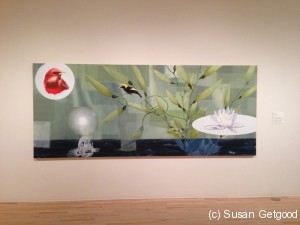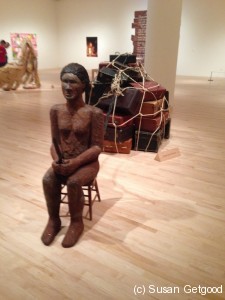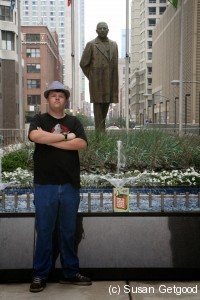 We barely scratched the surface of things to do and see in Philadelphia, and are already planning a trip back.
We barely scratched the surface of things to do and see in Philadelphia, and are already planning a trip back.
We invested in the three-day Philadelphia Pass which was offering a discount when I purchased it, making it an even better value even though I hedged my bets and bought Doug an adult pass. Some of the attractions cut off child pricing at 12 and don’t offer student pricing (the Zoo for example) and I didn’t want to end up double paying in the end. If you are in the same situation, and have more time for research, I suggest checking out all the attractions you plan to visit and purchasing adult or child for your tweens and teens accordingly. Order online and pick it up at the Independence Visitor Center right downtown, which is a pretty good spot to start your exploration of Philadelphia anyway.
The Philadelphia Pass was definitely a good value for us as it offered admittance to everything on our “must-do” list. The City Pass is another less pricey alternative but it didn’t work for us because it required a choice between two attractions that were on our must-do list.
Since we had never been to Philadelphia, we took full advantage of one of the benefits of our 3-day Philadelphia pass, two-days on the Big Bus Tour , a hop on/hop off double decker tour bus that stops at most of the major attractions. Next time, we’ll just use public transportation (or walk) but for our first visit to the city, it was good to have the guidance.
NOTE: All the above companies promote offerings for other cities, including New York, so worth checking out for other destinations.
Our sightseeing basically revolved around Art, Science and History. In this post, I’ll share our art excursion, much enjoyed by me, tolerated (just) by Douglas.
Our Stops: The Barnes Foundation, including the special Cezanne exhibit, and the Rodin Museum.
The permanent exhibits at The Barnes Foundation are amazing, full stop. Starting with the building itself. The collection is a mix of largely Impressionist and Modern Art collected by Dr. Barnes at the turn of the 20th century as well as African art, furniture, jewelry and metalcraft. Barnes actively designed the displays, so each wall, each room is itself an artwork, with the pieces in each grouping combining to make a whole that you can appreciate as much as you do its individual parts. The galleries have windows, with the shades opening and closing as the natural light changes so the artwork is displayed, literally, in the best possible light.
Staggering fact: the art in the permanent collection is worth $25 billion in today’s market.
I was less impressed with the Cezanne exhibit, The World Is an Apple: The Still Lifes of Paul Cézanne. Perhaps because I was a little rushed by my non-art loving travel companion so I was not taking advantage of the audio tours, but it just felt on the small side, especially given the extra entrance fee it requires.
Know before you go: Bags, briefcases, backpacks are not allowed in the exhibit hall. At the coat and bag check they will provide you with a clear plastic tote for any items you need to carry with you. I imagine this is because the collection includes small objets d’art and jewelry that are NOT exhibited behind glass cases.
 The Rodin Museum. Certainly one of the most impressive settings I’ve ever seen for a sculpture museum, and I loved seeing old favorites like the Burghers of Calais and the Thinker. It was very focused on Rodin’s Gates of Hell, and offered less context for Rodin’s life and other works such as the monument to Victor Hugo. I guess you need to go to the Musée Rodin in Paris for that. I believe it is however the second largest collection of Rodin after Paris, so if you are a fan (as I am), a must see. Your entrance fee also gets you admission to the Philadelphia Museum of Art. We did not make that stop this trip however, as Doug was pretty much “arted-out” by that point.
The Rodin Museum. Certainly one of the most impressive settings I’ve ever seen for a sculpture museum, and I loved seeing old favorites like the Burghers of Calais and the Thinker. It was very focused on Rodin’s Gates of Hell, and offered less context for Rodin’s life and other works such as the monument to Victor Hugo. I guess you need to go to the Musée Rodin in Paris for that. I believe it is however the second largest collection of Rodin after Paris, so if you are a fan (as I am), a must see. Your entrance fee also gets you admission to the Philadelphia Museum of Art. We did not make that stop this trip however, as Doug was pretty much “arted-out” by that point.
A neat fact about Philadelphia – it was the first US city to create a public art program requiring real estate developers to commission art as part of the development process. Building projects that receive public funds are required to allocate 1% of the budget to public art.
















